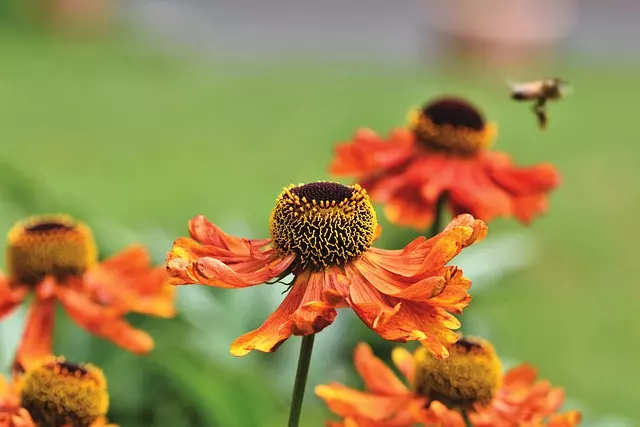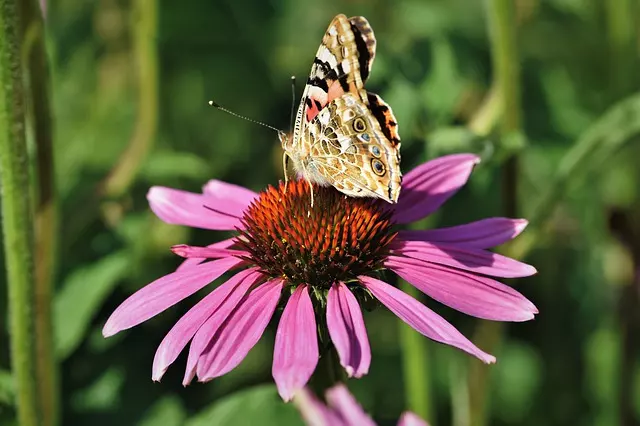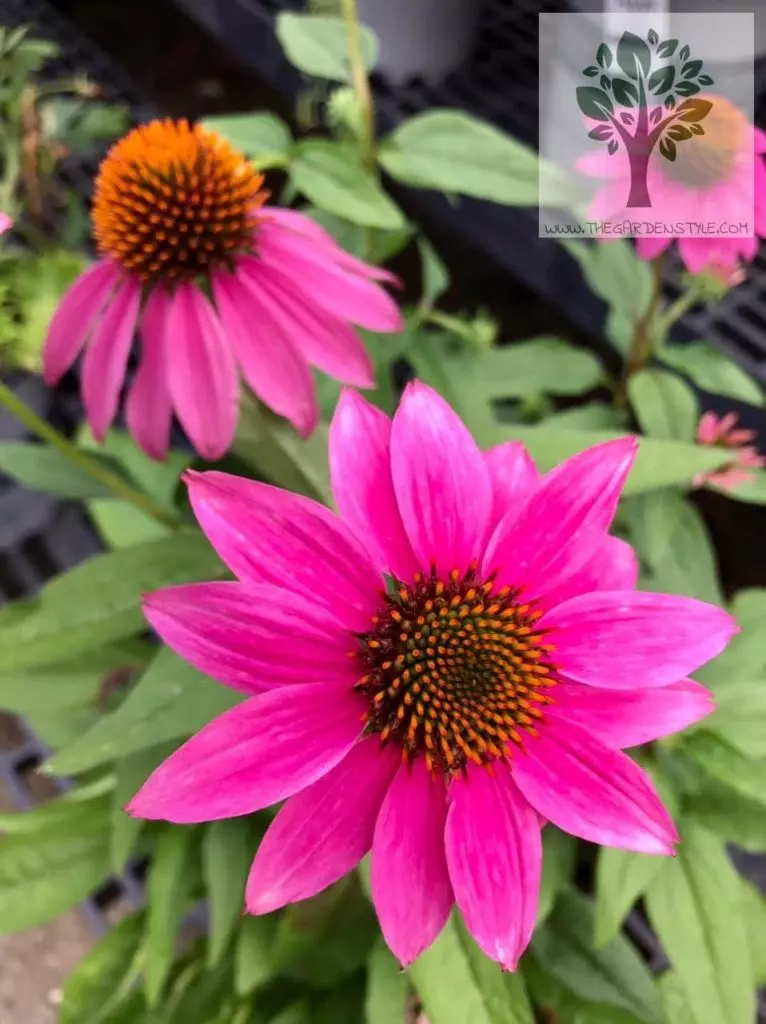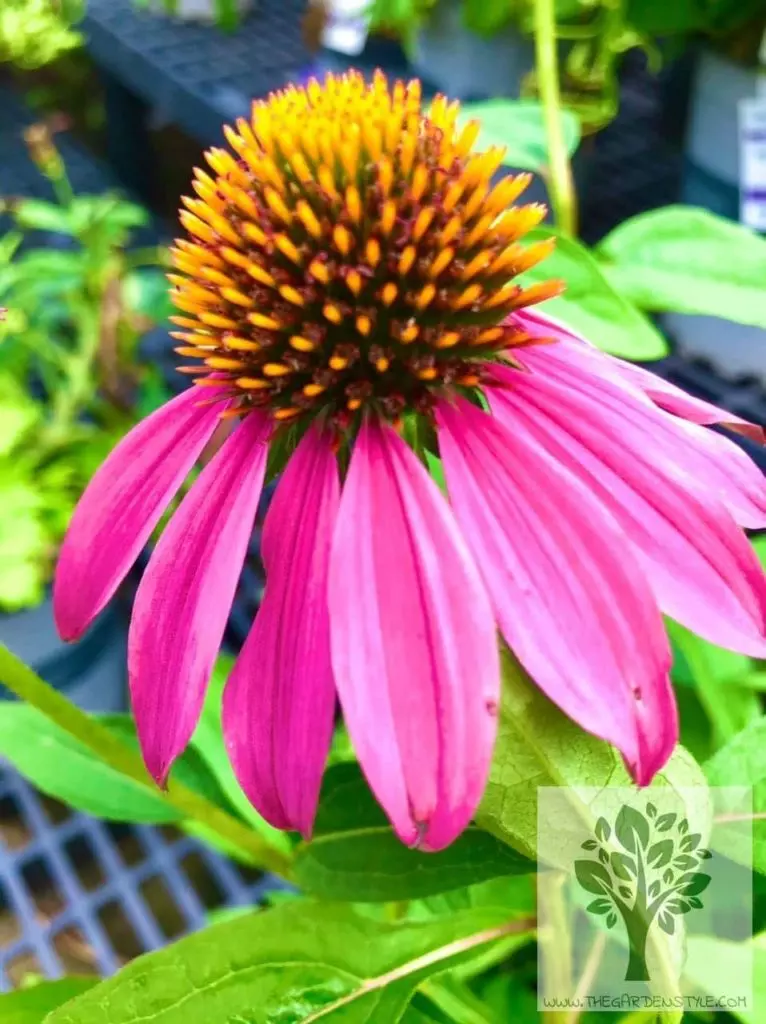Coneflowers are a perennial plant native to North America. It is an herbaceous plant with erect stems, it can measure from 16” to 39” (40 cm to 1 m) in height in most varieties. Its leaves are elongated, pointed, wider at their midpoint, dark green, and rough to the touch. The lower leaves are much larger than the upper ones. Learn all about how to care for coneflowers in this article.
This perennial plant is easy to care for, disease resistant, drought tolerant, tolerates low temperatures and produces very showy flowers over a long period. It has everything in its favor to be a favorite of many gardeners and we will continue talking about it today.
Table of Contents
How to Care for Coneflowers
As we mentioned before the Coneflowers are drought-resistant plants and very resistant to various pests, below we will explain how to care for coneflowers.
How to Care for Coneflowers – Temperature
Coneflowers like warm temperatures in summer although it tolerates frosts down to 14°F (-10º C) in winter. Like all perennials, when winter comes and temperatures drop, the plant loses its leaves and stems. During the cold season, nothing of the plant is visible on the ground. When the warm season arrives, the leaves begin to emerge and the plant develops again until it flowers.

How to Care for Coneflowers – Light
To properly care for Coneflowers you should place them in direct sunlight. It needs a location fully exposed to the sun’s rays to develop well and flower.
How to Care for Coneflowers – Soil
Like any other perennial plant, coneflowers need well-drained soil where their roots are safe from waterlogging that can kill the plant.
Some wild species prefer alkaline soils and others prefer slightly acidic soils although most hybrids and cultivars are undemanding and perform well in a wide range of pH levels.
For proper care of the Coneflowers, you should measure the pH of the soil and that it is in the range of 6.5 to 7.
They grow best in soils improved with compost but tolerate nutrient-poor soils better than other garden plants. They are adaptable to almost any soil type: dry sandy loams, loam soils, clays, etc.
To measure the pH of the soil we use the meter below this paragraph, the advantage of this meter is that it does not use batteries to operate.

Moisture and Watering of Coneflowers
Coneflowers plants tolerate moist environments well. They are fairly drought resistant once established in the garden although it is advisable to water them once or twice a week during spring and summer, depending on the climate, to keep them beautiful and abundant in bloom.
How to Propagate Coneflowers
Coneflowers plants can be propagated by seed, division, or cuttings, but remember that hybrid cultivars will not propagate from seed. If the flower heads of wild varieties are not removed the seeds will fall to the ground and propagate on their own.
To grow coneflowers from seed you must collect the seed from pollinated, mature flowers. Place the flower in a paper bag and hang the plant upside down. The flower will release the seeds into the bag when they are ready. Separate the seeds from the straw, dry them for a few weeks and then store them in a cool, dry place.
Ideally, they should be sown the following season, but they remain viable for at least 7 years. For long-term storage, they should be kept refrigerated.
Coneflowers can be propagated by dividing established specimens. Dig around the root ball until it can be lifted. Carefully shake off the soil and divide with your hands or a knife. Several plants can be obtained from one large specimen.
It is also possible to propagate Coneflower by stem cuttings. Cut a 4” to 6” (10 to 15 cm) piece of the stem, cover the end that will be planted with rooting hormones and stick it in the ground. A few weeks later, if the cutting roots, you will notice that it begins to produce new leaves.
We at The Garden Style recommend the following Coneflowers seeds and the following rooting hormone that worked for us in propagation.
- FASTEST ROOTING POWDER FOR PLANT CUTTINGS: Hormex rooting hormone powder is a unique product that encourages the natural process of rooting new plants from cuttings. Please check the list of plant varieties and rooting powder strength in the product photos.
- SUITABLE FOR ALL GROW MEDIUMS: Accelerate strong and healthy roots with this root stimulator for plants that are excellent for all grow mediums like Rockwool, coco, peat moss, soil, clay pellets, and more. As an added bonus, it also helps prevent root rot and sagging cuttings.
- NO BAD STUFF: Our root hormone for cuttings is an excellent powder to use even on the toughest and hard-to-root plants, like juniper, grapes, tomatoes, and more. It is made with no alcohol, dye, or preservatives, which is especially important when plants are for consumption.

Coneflowers Pests and Diseases
Coneflowers can be attacked by different insects in the garden: beetles, borers, aphids, worms, and caterpillars. These pests are not very difficult to control if they are detected in time by traps or ecological remedies.
They are rarely attacked by fungi and viral diseases, but they can occur. In any case, if they are controlled in time, it will be enough to eliminate the affected leaves. Fungal diseases can usually be controlled by growing the plants where they receive good aeration.

Medicinal Use of Coneflowers
In addition to being a great garden plant, coneflower is also widely used as a medicinal herb (primarily Echinacea angustifolia and Echinacea purpurea). Native American tribes of the Great Plains such as the Sioux, Comanche, and Cheyenne used preparations with the roots of this plant. Europeans learned its use and used it during the 18th and 19th centuries to treat diseases such as scarlet fever, syphilis, malaria, and diphtheria.
In ancient times the roots were chewed or crushed and applied as a poultice. Nowadays, extracts, ointments, tablets, or tinctures of the whole plant are commercialized: roots, stems, leaves and buds. Coneflower is considered to stimulate the immune system and reduce the duration and severity of colds, flu, sore throat, cough, fever, and infections.





